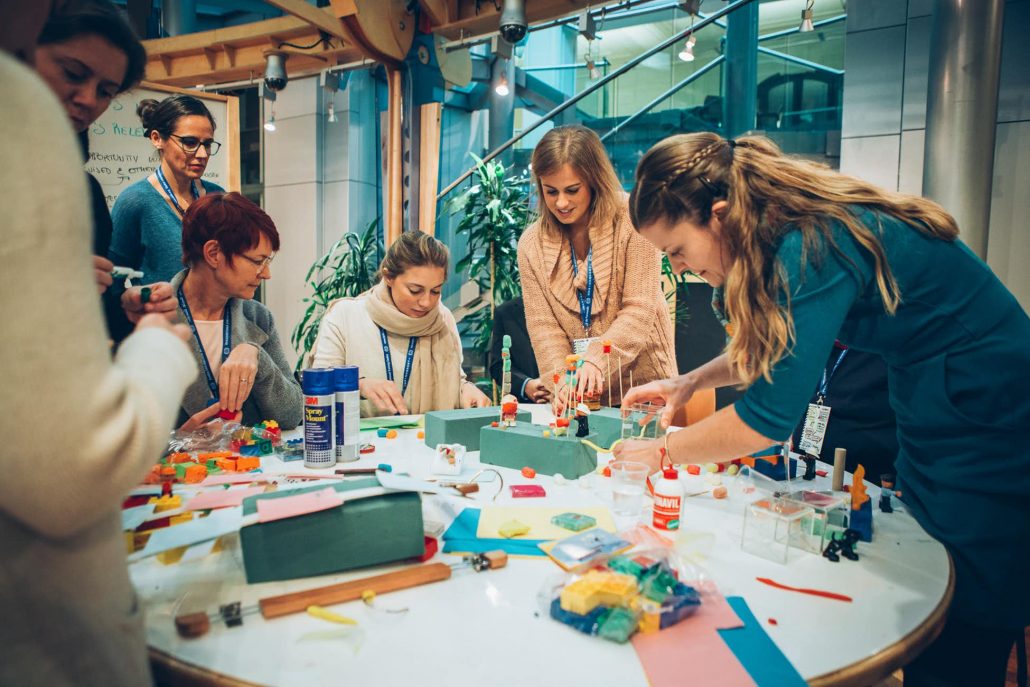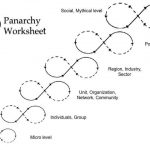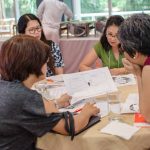Participatory 3D modelling

Using the senses to make sense of ideas
Overview
Participatory 3D modelling represents familiar concepts using physical objects, to find new ways to identify patterns, pain points, differing perspectives and innovation spaces. The exercise encourages communication and knowledge transfer, and forms a comprehensive picture of a complex whole. The model or diagram can be as simple as a model of a geographical space, or can use the metaphor of physical space to show information flows and interactions between components in a system. The method originally helped capture geographical information from local communities in sensitive areas, such as protected parks or natural resources.
How to use it
- Represent complex systems in new ways, to foster unique insights and perspectives.
- Facilitate participation in areas such as problem analysis, decision making and collaborative planning.
- Organizational development excercises on restructuring, decentralisation, outsourcing, and strategic planning.
- Refresh and stimulate the participants by utilizing all of the senses to share information.
- Gather spatial data from indigenous or marginalized groups of people in the interest of building respectful relationships and informing inclusive development initiatives.
How to apply it
Time/Steps:
- Introduce objectives and provide get-to-know-you time to foster a respectful, collaborative working environment.
- If there are many participants, divide into smaller groups, so everyone has a chance to participate.
- Provide paints, pins and thread, and instruct participants to plot the concept being discussed using the objects to represent various features or markers. They should develop a common system, and utilise the knowledge in the group to create the model.
- Offer advice on how to represent complexity, such as changing the colours of the pins and thread to represent different layers, like different eras or group perceptions, on the model.
- Encourage participants to discuss conflicting perceptions and decide collaboratively on a solution.
- Conclude the session when the model is completeand hold a participatory discussion to debrief.
- Note the key reflections, and capture the map or model itself, to record in an online report for future reference.
- Leave the physical model with the community members who contributed to its creation.
Time:
- Allow a substantial amount of time for preparation.
- 2 hours to 2 weeks: for the exercise itself.
How to adapt it
- The Tinker Toys method explores one-way and two-way communication and methods of effective communication. The model itself is not the focus of the activity – instead it is focused on improving communication methods.
- Draw the performance chart (see diagram below) on a white board.
- Divide the class into teams of six and assign each team a table.
- Explain that each team will compete with the others to build a structure with Tinker Toys. Three different tasks will be performed by each team; each task will require two different team members. The winning team will be the one that completes the three tasks most accuratelyin the least amount of time.
- Two members from each team are selected to perform the first task. Team members who will be completing the second and third tasks should leave the room.
- The team members who stay sit across the table from each other with a cardboard shield between them. One participant in each team is the sender and the other is the receiver of information.
- Give a pattern of a Tinker Toy structure to each sender and a package of Tinker Toys to each receiver. The senders describe the structure to their receivers and the receivers use the Tinker Toys to build the structure. Each pair will build the same structure.
- Explain that communication is one-way only. The receiver may not speak or make gestures of any kind, and the sender cannot see what the receiver is doing.
- Start each team and keep track of time. Make observations and notes concerning approaches used. When teams finish, record time and accuracy on the Performance Chart. Allow five minutes max for the task.
- Collect the patterns and disassemble the structures.
- The second task can now be started. Two more members from each team are brought into the room. The second task is performed in the same way as the first, using the same patterns; however, two-way communication is allowed. The sender may still not see the structure as it is built.
- Those who performed the first task may watch. At the end of the second 5 minute period, the last two members of each team are brought into the room.
- The third task is similar; however, this time the sender may watch the receiver build the structure. Two-way communication is allowed, and the sender may even draw information on a note pad and show the receiver.
- The receivers in all three tasks should not be allowed to see the Tinker Toy patterns.
- Those who performed the first and second tasks may watch the third task.
- Compute team and task totals for time and accuracy. In most cases task three is done most accurately, and task one the least accurate. Note any variations to this and their possible reasons.
- Conduct a discussion using your notes and the suggested questions.
- Repeat the exercise again using new patterns if you feel that reinforcement would be achieved.
Case study
Title:
Dare to dream and learn about team work
Activity:
Gender equality and decent work in integrated water resource management in South-Africa (2009)
Contact:
B.Magri@itcilo.org (ILSGEN)
Description:
The methodology was used to create team-spirit in the group at the beginning of the workshop. The participants were asked to imagine how their project would look like in five years and to make a model of that image. The methodology proved to be useful to discover the dynamics in the group and to include the less talkative participants. Further, it is a useful methodology when there are many different languages present in the group.
Tips
- Pay careful attention to group dynamics to ensure that all knowledge is equally conveyed in the visualization.
- Quick reference scales are an effective means of clarifying the proportional dimensions of a spatial model.
- Diverse backgrounds are useful in the spatial modelling process if they are all familiar with the specific area.
- Provide visual cues to guide participants to learning objectives (if they are other than pure knowledge gathering).
Resources
- Country case studies, maps and informational video available at: http://www.p3dm.org/
- Descriptions and resource links for various approaches to collaborative modelling: http://learningforsustainability.net/social_learning/participatory_modelling.php






